Background:
The reinstallation of the Mabotech M520h turbocharger and the addition of MPI raised questions about the next tune to use. I’ve been eyeing the Simos Tools’ logging capabilities, which are most extensive when paired with a Simos Tools tune, and decided to try it.
I contacted Russell Road & Racing, a UK-based tuner, about my goals, and we got started with tuning.

Hardware Selection:
Initially, I operated the GTI using the AMS Performance intake minus the enclosure.
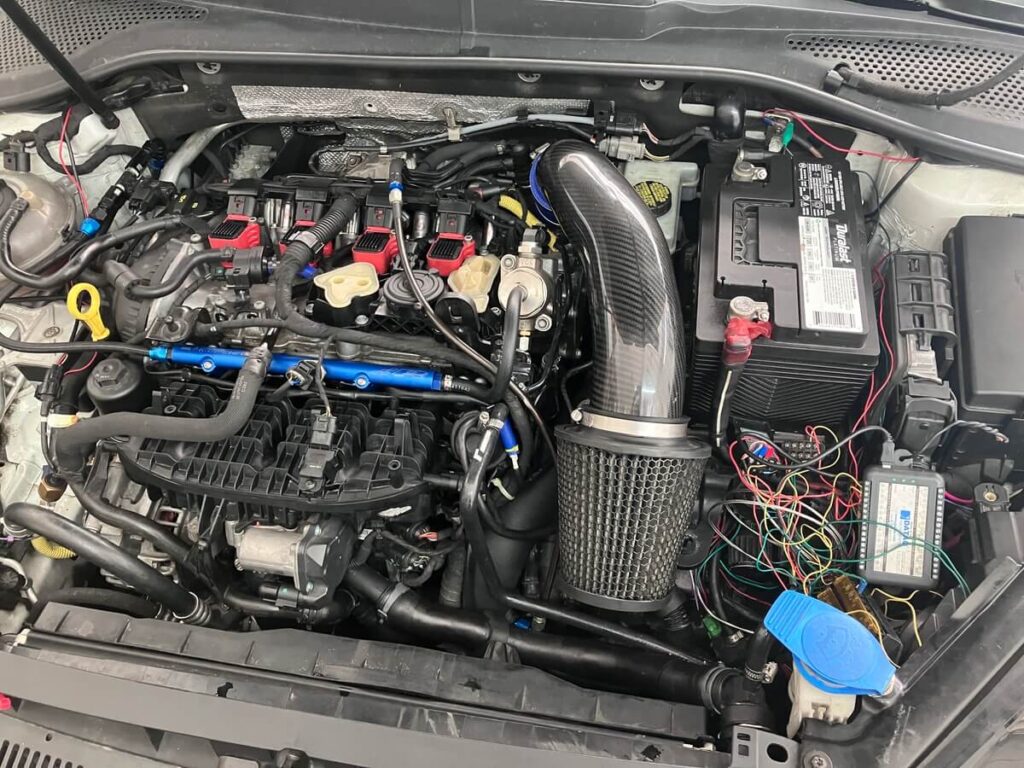
I did this because I have been making some revisions to a custom intake, and removing and then reinstalling the full intake setup is more time-consuming.
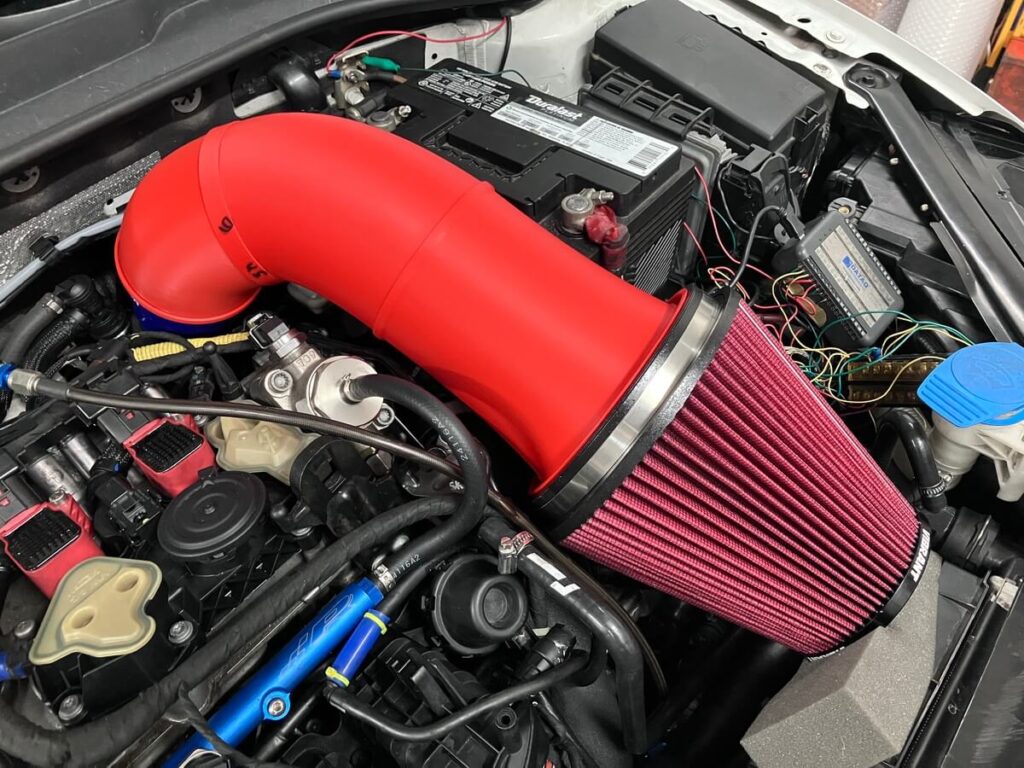
Doing this every couple of days as I check the fit of a new piece gets old quickly.
While the AMS Performance intake flows well, the lack of enclosure won’t help keep the pre-turbo intake air temperature down.
The GTI has the Mabotech stock location intercooler installed, which cools well and flows exceptionally well. Still, the IC density recovery does not help decrease the work the compressor has to do to raise the pressure of “warmer” than necessary intake air.
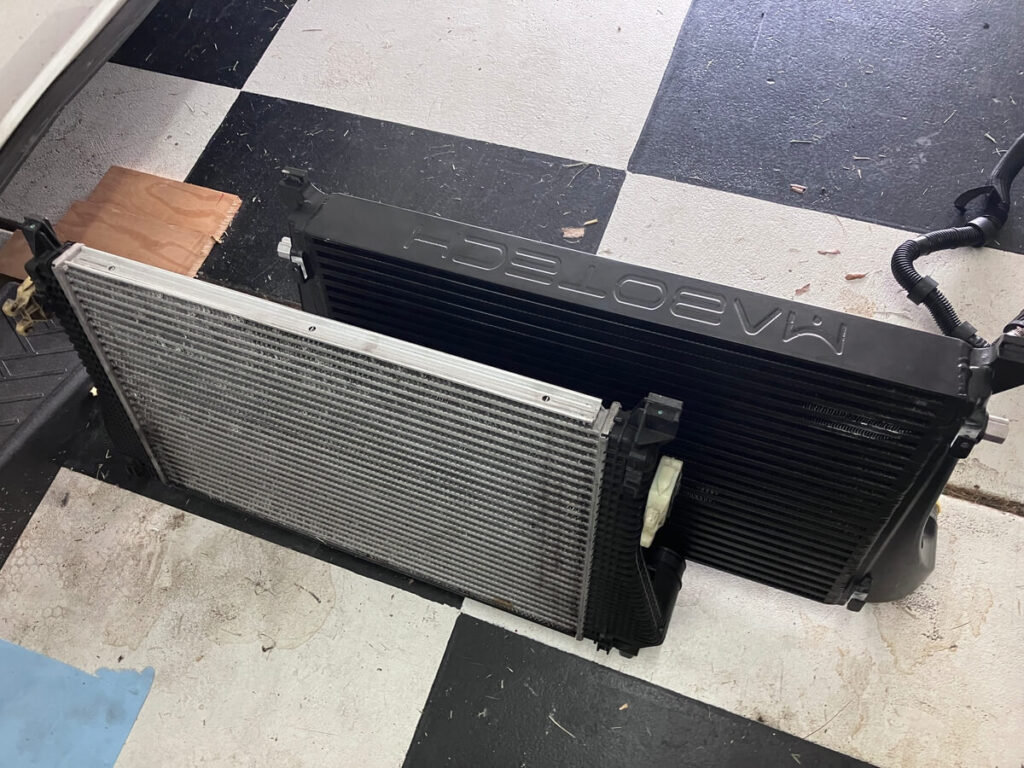
As tuning progressed, I decided it would be appropriate to install an intake that better keeps the warm engine compartment air out of the intake. In the past, I have tested the APR PEX intake and found that despite it being an “open” intake, it is effective at delivering the outside air to the turbo without increasing the temperature too much.
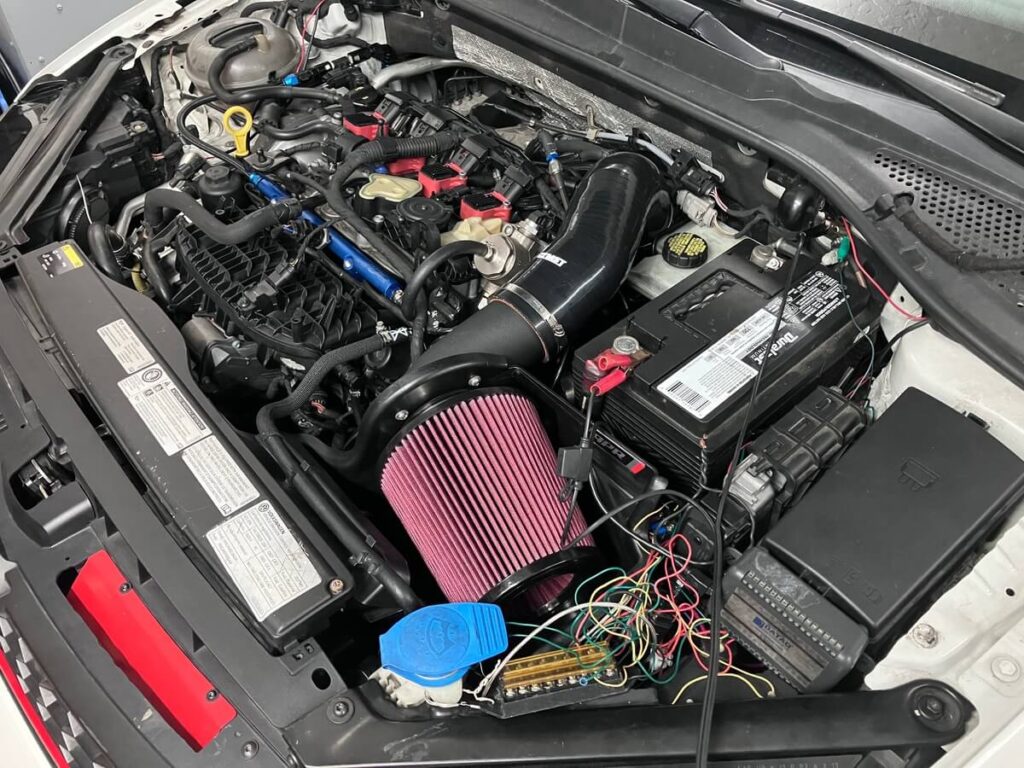
This intake will be more difficult to remove when I need to test fit the MGM7, but for the time being, the priority is ECU tuning.
Unchanged between intakes is the MST V2 – hybrid appropriate turbocharger inlet elbow.
The MST inlet hose is also used with the APR PEX intake.
Results:
One result I was interested in seeing with the swap was if the turbocharger wastegate duty cycle changed.
As I discussed in the Blaze ATOM Real World—Data Check #6, Equilibrium Tuning’s customer was using the APR open intake with a similarly sized turbocharger, the EQT Vortex XL.
According to the consumer, EQT advised them to switch to the Blaze ATOM intake they sell, and afterward, much better results were observed.
Clearly, in the case of my GTI, I am switching from the AMS Performance intake to the APR open intake, but according to EQT Owner Ed Susman, the AMS Performance and Blaze ATOM intakes perform very similarly.

Another notable difference is that the AMS intake doesn’t have its enclosure. That can potentially help and hurt the work required by the compressor wheel. It could help because the intake might have less restriction without the enclosure, but it could hurt due to drawing in warmer air.
In this case, the goal was not to use the AMS intake as a surrogate to try to make a conclusive comparison of the APR intake and Blaze intake. I was swapping intakes, and the data recorded with each intake could indicate how a better comparison would turn out.
Logging Comparison:
Nine samples are recorded using the AMS Performance intake during full-throttle third-gear pulls.
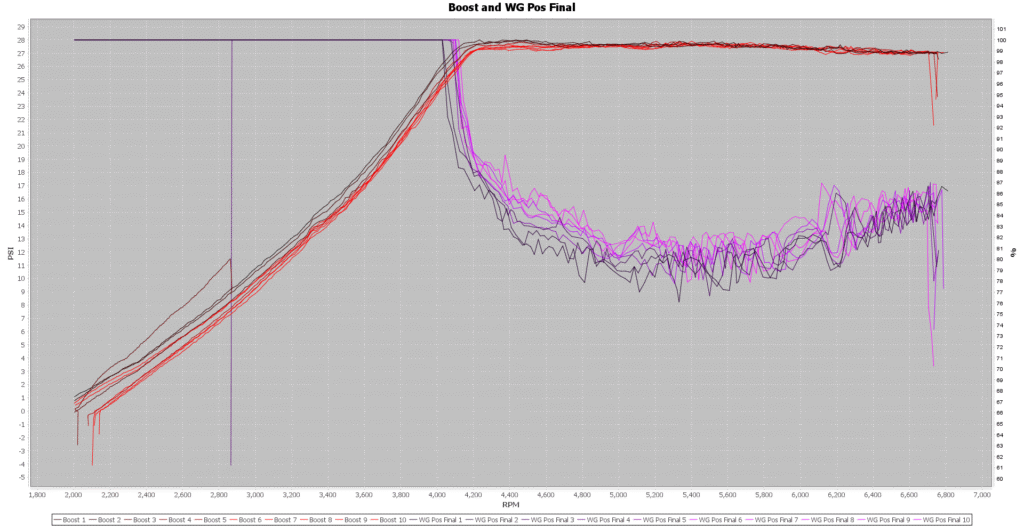
Four samples were logged using the APR PEX open intake.
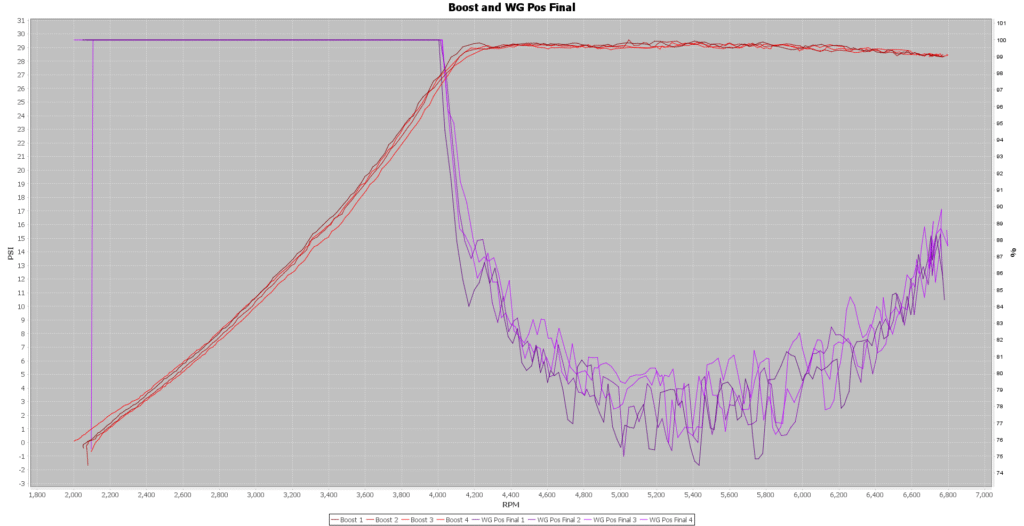
Note: The APR WGDC curve appears to dip lower due to the auto-scaling of the second y-axis.
The following chart compares the samples from each intake:
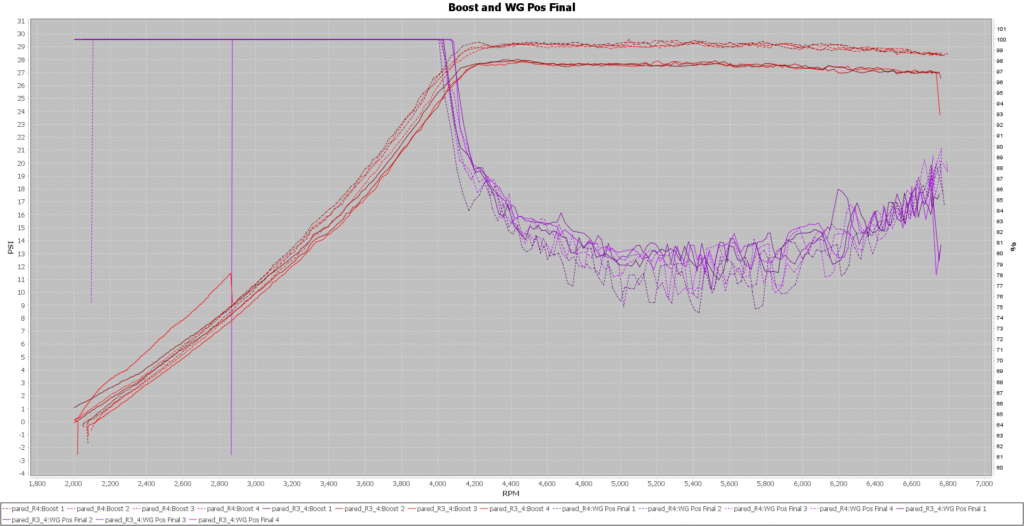
In the following charts, the averages of the data are compared.
- 3 – Light blue is the AMS Performance intake data.
- 4 – Dark blue is the APR PEX intake data
The first chart compares the average intake air temperature (IAT). The IAT between intakes is similar during each session.
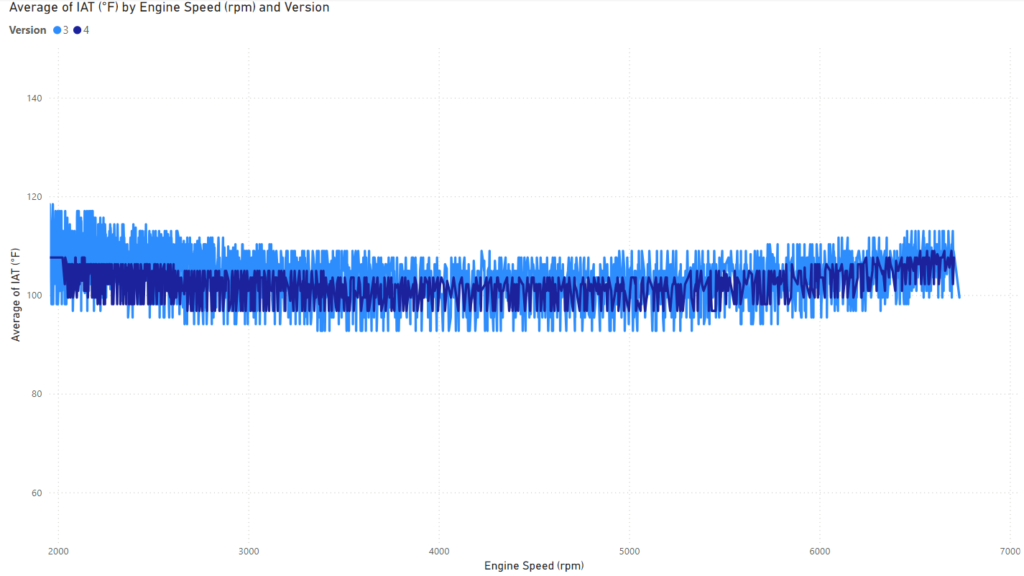
Next is the boost pressure curve.
Between recording the data with the AMS intake and switching to the APR intake, Russell Road & Racing revised the ECU tune, shown by the APR session with a higher boost pressure.
The boost pressure during the AMS session was 27.5 psi, and during the APR session, it was 29 psi.
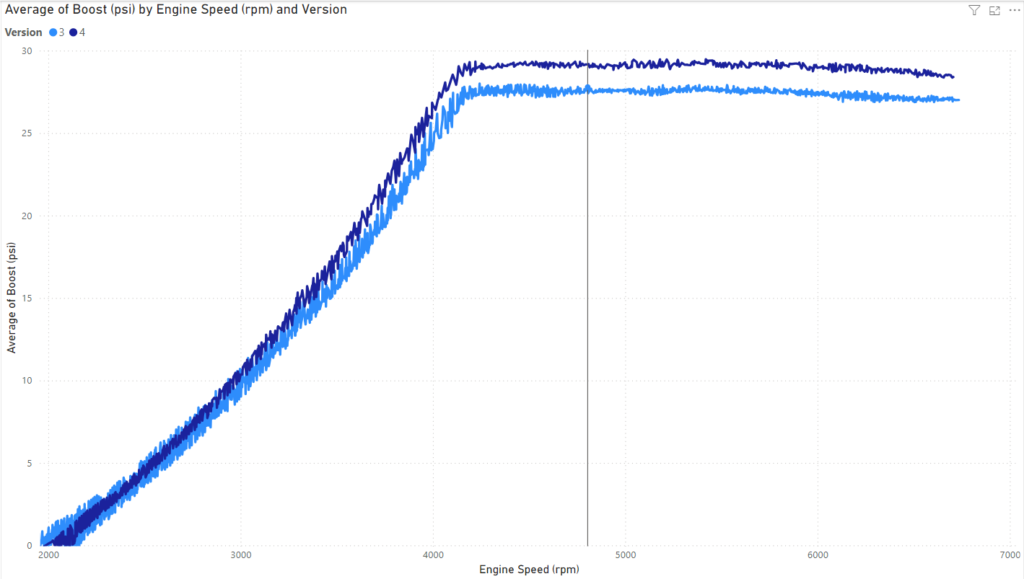
The higher operating pressure should drive the wastegate duty cycle higher, but as the chart below shows, that was not the case. Using the APR PEX intake resulted in a slight decrease in the WGDC.
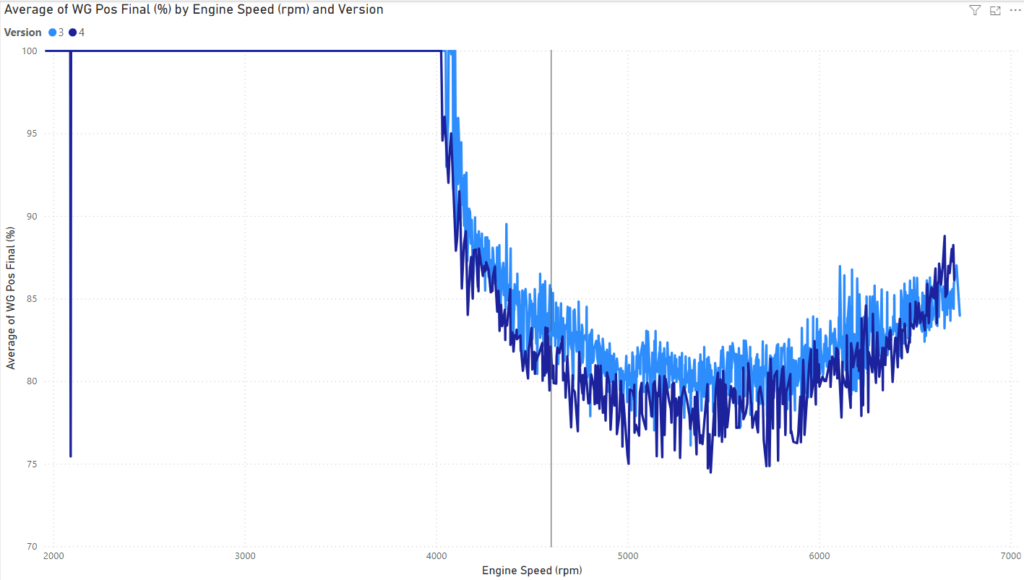
As mentioned, the AMS intake without the enclosure will likely raise the air temperature and the WGDC more than it would if the enclosure were used.
Given the limitations already discussed, the AMS intake was compared to the APR intake to see the outcome.
Next Steps:
EQT customer Joe stated they saw a 20-25% difference in WGDC when they switched from an APR open intake to the Blaze ATOM Race intake.
Re-installing the Blaze ATOM to see how it compares with the APR PEX will be next.
